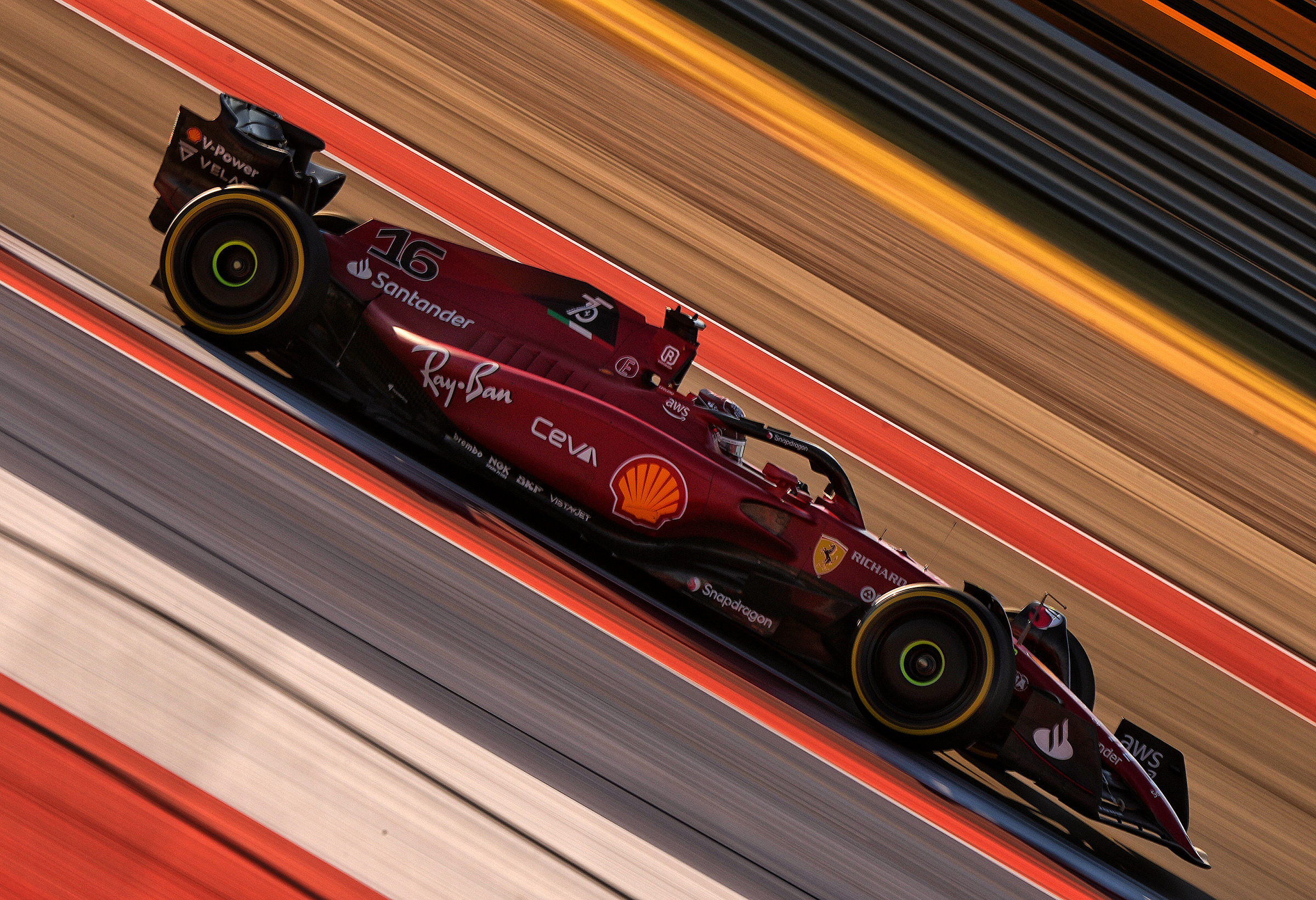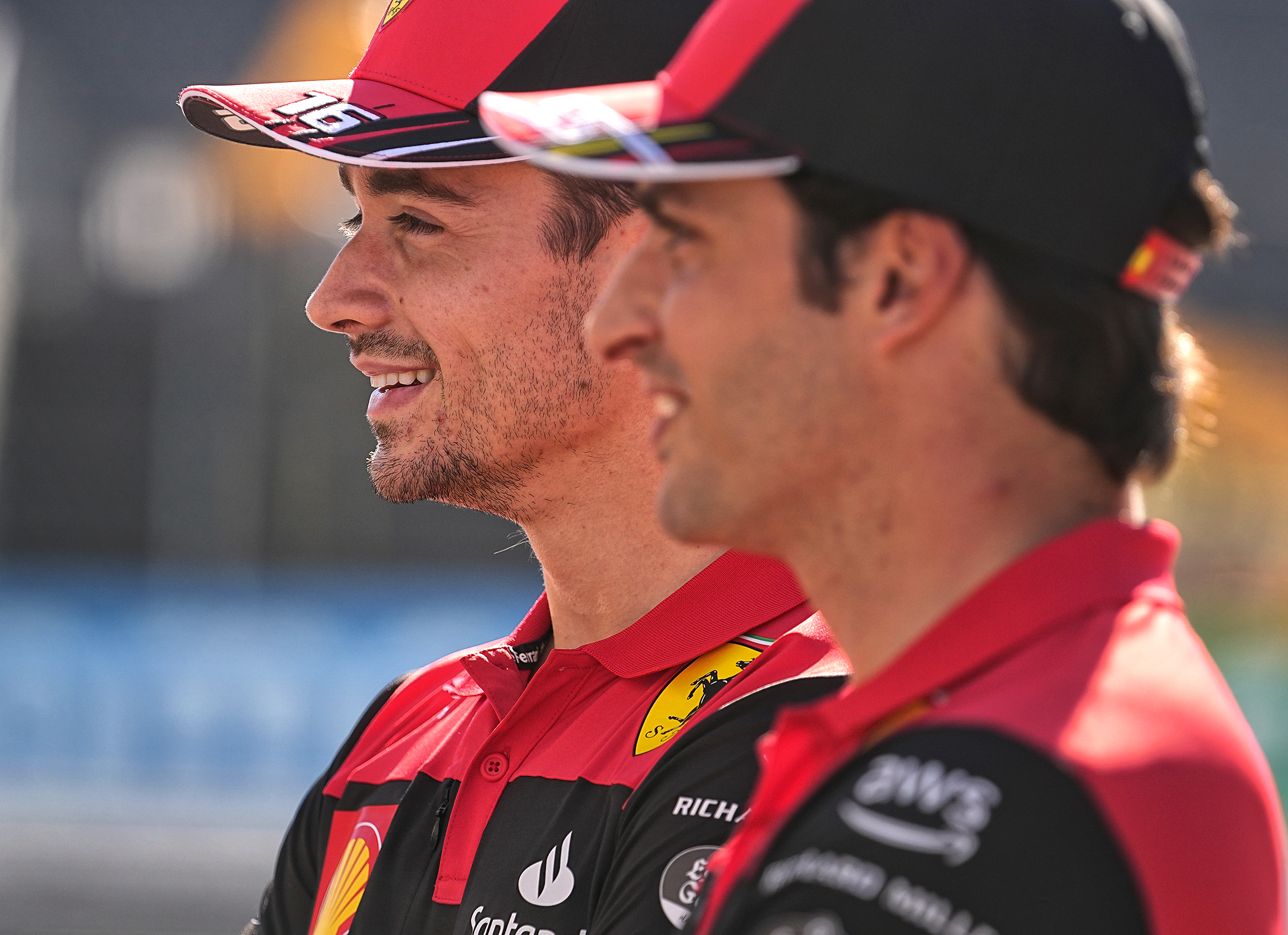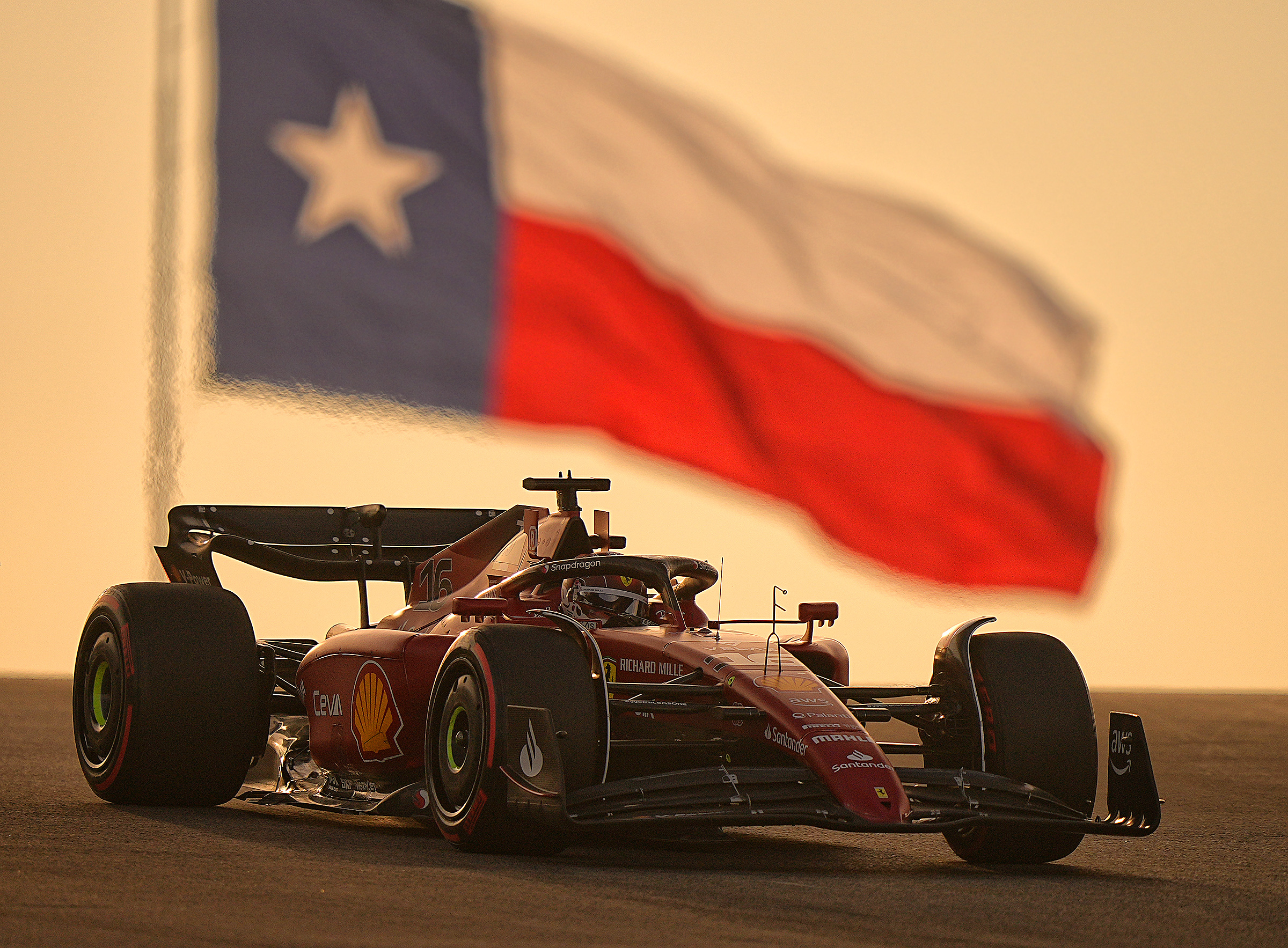How Ferrari Could Be Red Bull’s Red Scare This Season

The sound of camera clicks echoed off the pavement at the Circuit of the Americas’ paddock last October, photographers hoping to snag a shot of the 20 drivers, 10 teams and slew of junior drivers present.
Some sought the perfect angle outside of the garages as team members darted back and forth to their hospitality suites, while others waited for the drivers to emerge onto the patios. Whenever a driver stepped out of the hospitality area, they were swarmed.
Standing on a patio, Carlos Sainz gave a knowing look when asked whether he ever adjusts to the photographers. He says it’s something you get used to over time, but days like this “are just super hectic.” It comes with the territory of being a member of the most storied team in the sport’s history.
For seven decades, people have been drawn to the team. Charles Leclerc remembers watching the Monaco Grand Prix as a 3- or 4-year-old from his best friend’s balcony. As the cars zipped through the narrow streets below, his eye was drawn to one thing: “For me, it was all about the red car.”

He didn’t know who was driving—it happened to be seven-time F1 world champion Michael Schumacher—or even that it was a Ferrari. He was just pulled in by the vibrant color that symbolizes passion and courage. That was no accident; team founder Enzo Ferrari once famously said, “Ask a child to draw a car, and certainly he will draw it red.”
Two decades later Leclerc drives for Ferrari, and his fellow driver also has early memories of the team. “If you remember your car when you were little, you remember a red car, which shows how big is Ferrari,” says Sainz. “You end up knowing . . . red means Ferrari, and Ferrari means red.”
For years, Ferrari was also synonymous with success. Ferrari is the only F1 team to compete in every season since the world championship began in 1950, and since then it’s brought home 16 constructors’ titles, 15 drivers’ championships, 243 first-place finishes and 242 pole positions. Some of the biggest names in the history of the sport have driven for the team: Alberto Ascari, Niki Lauda, Gilles Villeneuve, Kimi Räikkönen, Fernando Alonso, Sebastian Vettel and Schumacher. All in red cars—rosso scuderia—adorned with the cavallino rampante logo, a black prancing horse on a bright-yellow background.
But Ferrari hasn’t won a constructors’ title since 2008 or a drivers’ championship since Räikkönen’s in ’07. Its sixth-place finish in the constructors’ race in ’20 was its worst in 39 years, and the team was winless in ’20 and ’21. Then last year, the duo of Leclerc, 25, and Sainz, 28, began the season with a 1–2 finish in Bahrain, the Prancing Horse’s first trip to victory lane in 46 races, and Leclerc won again in the third race, in Australia.
As the season wore on, though, things fell apart, and they wound up watching Max Verstappen win 15 times and clinch the drivers’ title with four races left. Leclerc held on to finish second, and Sainz was fifth, leading to optimism Ferrari’s title drought could end in 2023. But the team is cautious. “[It wasn’t] a surprise but a relief in a way, to see that we were as competitive as we would have hoped for,” Leclerc says. “We knew how hard we have worked to come back very competitive this year. But we still have doubts of how competitive we will be.”
When Sainz joined Ferrari from McLaren in 2021, he and Leclerc became the youngest pair of drivers the team had ever had. They bring different strengths—Leclerc displays ballistic speed, while Sainz has a methodical approach and a calm attitude. They’re thoughtful when responding to questions, sometimes looking over an interviewer’s shoulder to think through a response, but their youthfulness flashes through when they crack jokes—such as in the C2 videos on Ferrari’s YouTube channel, in which they take part in largely silly competitions. (Watching them race to suss out country names with emoji as their only clue is truly must-watch content, especially when Leclerc, when confronted with a turkey emoji, guesses “chicken.”)

While both launched their careers in karting, the Spaniard faced an added pressure: shaking the label of the son of. Sainz’s father, Carlos Sr., is a two-time world rally champion who competed in the Dakar Rally earlier this year at age 60. (He was forced to retire from the race after a scary crash.) Leclerc’s late father, Hervé, was a former F3 driver who became Charles’s mechanic and mentor. Leclerc began racing karts at a track managed by the father of his close friend Jules Bianchi, who was his godfather despite being just seven years older than Leclerc. “From the beginning, we always used to race together in karting,” says Leclerc. “Maybe for fun, but to me, I was younger racing with [Jules], who had much more experience, and that helped me to get ahead of the game.” Bianchi went on to drive in F1 for Marussia, but he died after a crash in the 2014 Japanese Grand Prix. When Leclerc races, the word papa is etched on the left side of the back of his helmet, while jules is on the right.
Leclerc and Sainz complement each other well, which was evident in qualifying for the French Grand Prix last July, when Sainz allowed Leclerc to slipstream past him. The slight increase in speed from the tow helped put Leclerc on the pole. “The problem for Ferrari is definitely not the drivers,” says Felipe Massa, who drove for the team for eight years and missed winning the 2008 drivers’ championship by one point. “It’s other things that just need to be a bit more connected.”
As the 2022 season wore on, Ferrari was hampered by strategic mistakes and reliability issues (and, to be fair, the occasional driver error). Leclerc had the best car in Monaco—on his home track—but the team called both drivers in to pit at the same time, forcing him to wait for the crew to change Sainz’s tires and give up the lead on a track where passing is notoriously difficult. Six weeks later in Austria, Ferrari had a good chance for another 1–2 finish, when Sainz’s engine failed late in the race, his car bursting into flames. The team also struggled with tire degradation all season.
“When all of these mistakes started, you could see that the face of the people inside the team was changing a bit,” says Massa. “Then you see that the pressure starts to be higher inside the team. The mistakes are increasing in other areas.”
At the Brazilian Grand Prix in November, team principal Mattia Binotto revealed another reason why Ferrari struggled late in the season: The team was forced to stop developing its 2022 car, because it had hit the spending limit under F1’s budget cap. The team’s fans—the tifosi—began calling for Binotto to be fired, and eventually he resigned in December.
“In Ferrari, everything is so intense in the good way, but it’s also in the bad way,” says Massa. “And sometimes somebody needs to pay.”
Binotto’s replacement is Frédéric Vasseur, who revitalized Alfa Romeo, renewing the staff’s confidence, drawing in new partners and last year guiding the outfit to the team’s best result—sixth in the constructors’ race—in a decade. He’ll be reunited with Leclerc, who drove for him as a rookie in 2018. He’ll also face loftier expectations, something that comes with the territory.

“Critics are fair, and I am the first one listening to them and understanding them,” Sainz says. “You just feel like being part of Ferrari, you’re under more scrutiny than anyone else. But it is also true that we’ve taken a huge step forward [in 2022].” After several down years, he says, “It is normal that we didn’t get things perfect, that we don’t get things right. We are on another learning curve to try to understand the car better and the team better, to perform better.”
One thing that won’t change is the ethos. Etched on the left sleeve of their team uniforms is a simple hashtag coined by Binotto: #essereferrari. It roughly translates to “being Ferrari,” but it’s more something one sees than reads. It’s evident in the fan base as the flags wave trackside and in the competitive fire that burns—red—in the garage. “I see Ferrari as passion,” Sainz says. “If you’re part of Ferrari, you feel an incredible amount of emotion for the team, and you know you want to do well. You want to do well for the tifosi because you’ll feel the passion, feel the history, feel the legend of the team.
“It’s a huge responsibility but also the best responsibility.”
